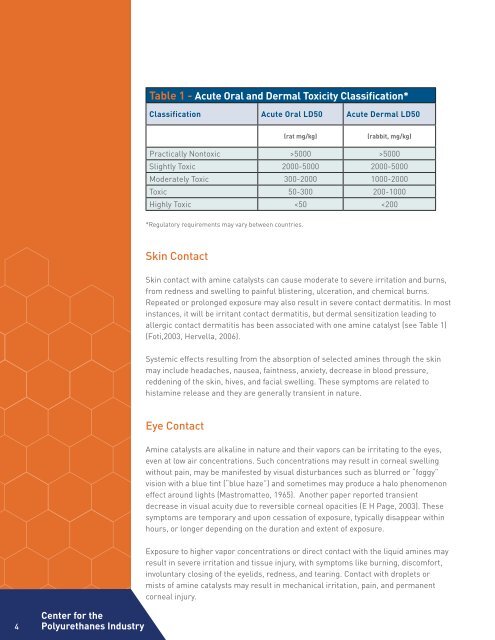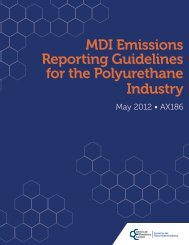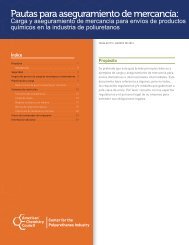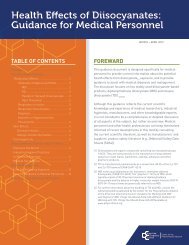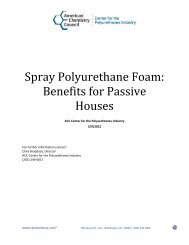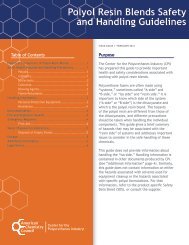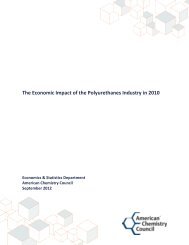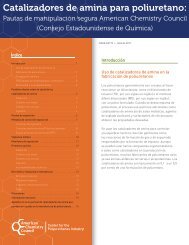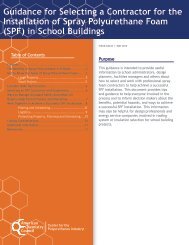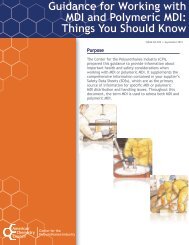Polyurethane Amine Catalysts - Polyurethanes - American ...
Polyurethane Amine Catalysts - Polyurethanes - American ...
Polyurethane Amine Catalysts - Polyurethanes - American ...
Create successful ePaper yourself
Turn your PDF publications into a flip-book with our unique Google optimized e-Paper software.
4<br />
Center for the<br />
<strong>Polyurethane</strong>s Industry<br />
Table 1 - Acute Oral and Dermal Toxicity Classification*<br />
Classification Acute Oral LD50 Acute Dermal LD50<br />
Skin Contact<br />
Skin contact with amine catalysts can cause moderate to severe irritation and burns,<br />
from redness and swelling to painful blistering, ulceration, and chemical burns.<br />
Repeated or prolonged exposure may also result in severe contact dermatitis. In most<br />
instances, it will be irritant contact dermatitis, but dermal sensitization leading to<br />
allergic contact dermatitis has been associated with one amine catalyst (see Table 1)<br />
(Foti,2003, Hervella, 2006).<br />
Systemic effects resulting from the absorption of selected amines through the skin<br />
may include headaches, nausea, faintness, anxiety, decrease in blood pressure,<br />
reddening of the skin, hives, and facial swelling. These symptoms are related to<br />
histamine release and they are generally transient in nature.<br />
Eye Contact<br />
(rat mg/kg) (rabbit, mg/kg)<br />
Practically Nontoxic >5000 >5000<br />
Slightly Toxic 2000-5000 2000-5000<br />
Moderately Toxic 300-2000 1000-2000<br />
Toxic 50-300 200-1000<br />
Highly Toxic


